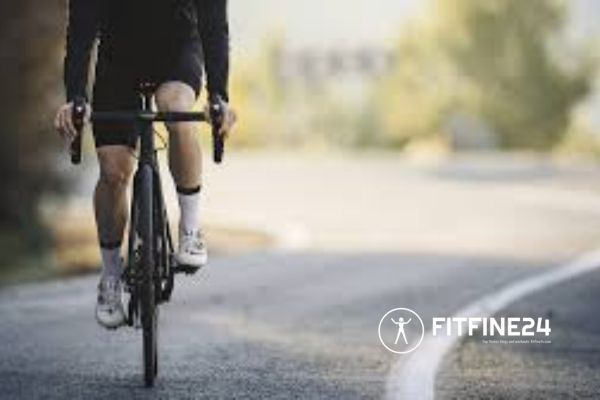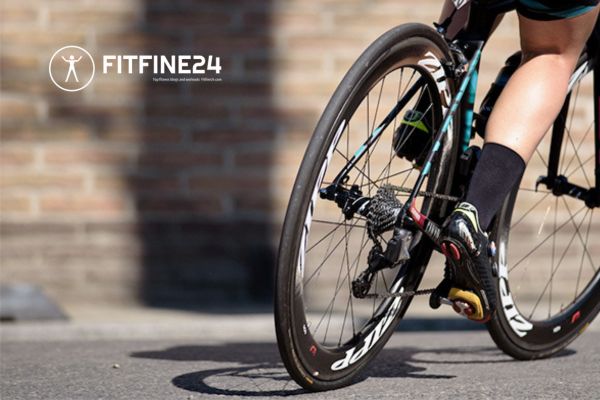
Cadence Training is an important aspect and is available and should be harnessed to enhance cycling effectiveness and performance. Cadence or pedal speed is one of the factors that contribute to most of the aspects that are concerned with cycling. This means you can work on improving your overall cycling performance through fatigue reduction. This write-up will also cover tips on increasing the pedal speed by learning the benefits of cadence training and how to fit it within your schedule.
What is Cadence Training?
Cadence Training can be defined as a technique that emphasizes weight and speed adjustment for optimal efficiency in cycling. It is stated in revolutions per minute – RPM, how many full circulations the pedals do within a specified time, usually one minute. In most cases, cadence training focuses on your pedal speed towards achieving a specific goal for a given cycling scenario.
Key Aspects of Cadence Training

Low Cadence: – means to pedal at a slow RPM with a considerable resistance level whereby this is mainly used for strength training and power generation purposes.
High Cadence: Pedaling with a high R.P.M. but a low resistance level; this is mostly aimed at enhancing the aerobic capacity of an individual as well as decreasing muscle fatigue.
Benefits of Cadence Training Improves Cycling Efficiency Optimal cadence ensures that energy is utilized in the most cost-efficient manner. The closer the ratio of cadence and resistance is to the ideal, the less effort you have to expend in pedal revolutions and the longer you can do so without tiring out.
These efficiencies lessen the total fatigue and thereby improve performance. Enhances Cardiovascular Fitness High-cadence training has a positive effect on cardiovascular capacity as it raises heart rate and improves blood flow, thus bringing more oxygen to the active muscles and enabling its more effective use while cycling.
Reduces Muscle Fatigue Training at higher cadences with lower resistance increases output while diminishing muscle strain. This reduces the level of muscle fatigue and soreness when cycling thus enabling longer distances to be ridden as well as faster recovery times between riding sessions. Builds Endurance Cadence training helps in building endurance because it allows you to concentrate more on maintaining efforts for a lengthy period without getting tired.
Once you’re satisfied with your current cadence, try to work progressively harder on your pedaling technique to increase your cadence again and this will increase your endurance and performance in shorter and longer rides. Improves Technique and Form There is also an improvement in your cycling technique and form due to the concentration on cadence.
Pedaling rhythm plays a very crucial role in maintaining an equal distribution of the body weight on the bicycle without toppling over. In particular, such training helps to take over the control of the pedals with nice and efficient isolated motions.
Reduces Strain

Having a good pedal stroke can also help minimize the risks of risk factors by minimizing stress exerted on the vertebral joints and muscles. When you calculate your pedal pace and resistance among others optimally, you reduce the scope of suffering from overuse injuries while enjoying the sports activities.
How to Add Cadence Training in Your Workouts
Including cadence training in your workout regimen is a bit technical in the sense that you will have to tweak the speed and resistance of the source pedal for certain. Here is how you can get started
Identify Your Current Cadence
When it comes to cadence training, you need to identify your current cadence first to have a point of reference. A bicycle computer or cadence sensor can help you check your RPM during a normal ride to this extent. This way, it will help you know how far you are at the moment and how much more you need to strive towards bettering it.
Creation of a Cadence Target
The creation of cadence target goals for various riding styles will be determined by how you have performed. For example:
Endurance Rides:The speeds/breath cadence for this set of rides should be about 80-90 RPM with these levels of riding intensity to help improve capacity and endurance.
Hill Climbs: A slower pedal of 60-70 RPM but higher resistance for strength and power is advised.
Sprints:100-110 RPM are respectively fast cadences used to develop speed as well as explosive power.
Integrate Cadence Drills
As a way of enhancing your pedal speed, incorporate cadence drills into your regimen. Such drills are:
Cadence Builds: Select a time frame eg. 1-2 minutes over which you will gradually increase your cadence and then reduce it towards the end of the timeframe. Do this severally.
High Cadence Sprints: Exercise alternates between high-cadence sprints of 20-30 seconds and low cadence for 1-2 minutes in an attempt to condition to sustain high cadences.
Low cadence strength work: This involves doing short intervals maintaining a low cadence and very high resistance towards muscular power.
Monitor Your Progress
Use a bike computer or a cadence sensor to track the cadence adjustment. Observe RPM change, endurance timetable, and performance recording while cycling. Other trainees will be set different cycling goals depending on their training progress and key areas that need improvement.
Focus on Technique
Besides cadencing, other considerations such as cycling technique should be adhered to. Strive to have a fluid and smooth pedal motion without any jerks while ensuring your bike is fitting as well as comfortable. It is essential to self-review on a routine basis and the necessary corrections to one’s posture made.
Guidelines for Cadence Training Improvements
Establish doable cadence targets and build up intensity as the fitness level gets better. This will prevent overuse injuries by making sure there are no sudden shocks in the training routine.

Wear the Right Equipment
Check the gears and other parts of the bike that are prone to wear and tear since they will enhance changes in your cadence. Good training practice will usually require one to do adequate bike servicing.
Seek to Change the Activities
Combine several separately performed exercises into a single complex or combine two or more movements in a single training. Such bike training techniques help in improving more than one cycling technique.
Make Sure You Drink and Eat
Drinking and eating is very important because it helps a lot when doing the cadence exercise. Water should be taken before, during, and after workouts, and a healthy diet complemented in between.
Rest Time
Sufficient time should be left out after doing cadence training to allow recovery before undertaking another session. It is helpful to take a break from training every once in a while to prevent getting very worn out and losing the improvements made.
Monitoring Your Cadence Improvement
Consistency represents the most considerable aspect in assisting you with growth and adapting your practice plans. Such information, such as RPM or distance traveled, along with other performance metrics, can be recorded with fitness apps or certain specialized bike computers. It is advisable to consider the mean values and look at the data you have collected to see if changes to the training are needed.
Conclusion
Cadence Training is one of the important and integral parts of performance improvement in cycling in general and cycling efficiency in particular. When you work on correct cadence and add any boarding over pedaling leg speed into your training, you improve your aerobic capacity and extend the time to muscle fatigue. Start practicing with cadence today and gain the advantages of cycling workout optimization with Fitfine24!

